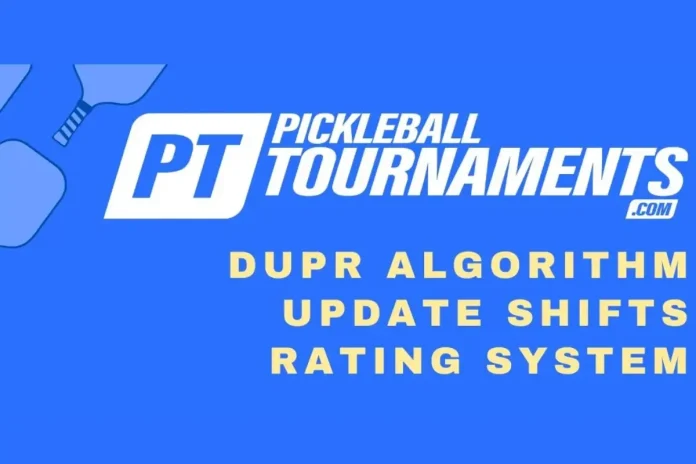DUPR Pickleball Rating Algorithm Update: Dynamic Universal Pickleball Rating (DUPR), the system used to measure pickleball players’ skill levels, has launched a new update to its algorithm this summer. The change affects how matches are scored and how ratings move, with a goal of making the system more fair and transparent for players at every level.
Why DUPR made the change
DUPR Chief Executive Officer Tito Machado said the update was about keeping up with the sport’s growth. “The sport is evolving fast, and so are the needs of players and organizers,” he said. “We heard the feedback. Players wanted ratings that updated more consistently and more fairly, especially across different formats like singles, doubles, and mixed.”
DUPR Chief Data Scientist Sarah Carpenter added that the update had to balance math with simplicity. “Our goal was to build something that is mathematically sound but also intuitive. Players shouldn’t need a PhD in statistics to understand why their rating moves.” She explained the changes were designed to make the process clearer for all players.
What changed in the system
The new algorithm adjusts how much weight each match carries. Wins and losses still matter, but the context of the game matters more than before. Carpenter explained, “The old system sometimes overreacted to one-off results. Now, consistency is rewarded. If you beat higher-rated opponents often, your DUPR will rise faster, but one fluke result won’t throw your number off.”
The update also makes doubles ratings more accurate. Machado said, “It’s tricky because in doubles, four ratings interact at once. We’ve adjusted for that so your partner’s rating doesn’t unfairly drag you up or down.” This is meant to prevent frustration when players team up with friends at different skill levels.
Effects on everyday and competitive players
Machado emphasized that the redesign was not only for professional players but also for those in local clubs and leagues. “Whether you’re playing in a local ladder league or casually recording games at your club, you want your DUPR to feel accurate. That’s what keeps people engaged.”
Carpenter added that the system has to work for everyone. “Elite players care about precision because ratings affect entry into high-level events. Recreational players just want to know: am I improving? The update is built to serve both without compromise.”
Building trust with players
Machado said that the biggest challenge is trust. “We can’t ask the pickleball community to buy into DUPR if they feel like the math is a black box.” To address this, DUPR is sharing more learning materials and simpler explanations of how the rating system works.
Carpenter said this is part of a larger trend of using data in pickleball. “This isn’t just about ratings. It’s about building a reliable competitive ecosystem. Data can tell us where the sport is thriving, which formats are gaining traction, and how to make tournaments better for players.”
Looking ahead
Both Machado and Carpenter said the work is not finished. “Algorithms are living things,” Machado said. “As the sport grows, we’ll keep adapting. This isn’t the end of the road — it’s the beginning of a better one.”
Carpenter added, “Pickleball deserves a system that evolves as quickly as the people who play it.”
News in Brief: DUPR Pickleball Rating Algorithm Update
DUPR, pickleball’s main rating system, has updated its algorithm to make ratings more fair and consistent. The new formula rewards consistent play, improves doubles accuracy, and adds transparency. DUPR leaders Tito Machado and Sarah Carpenter say the system will continue to adapt as the sport grows.
ALSO READ: Unlock Your Pickleball Potential: What Your DUPR Rating Really Says About Your Game

